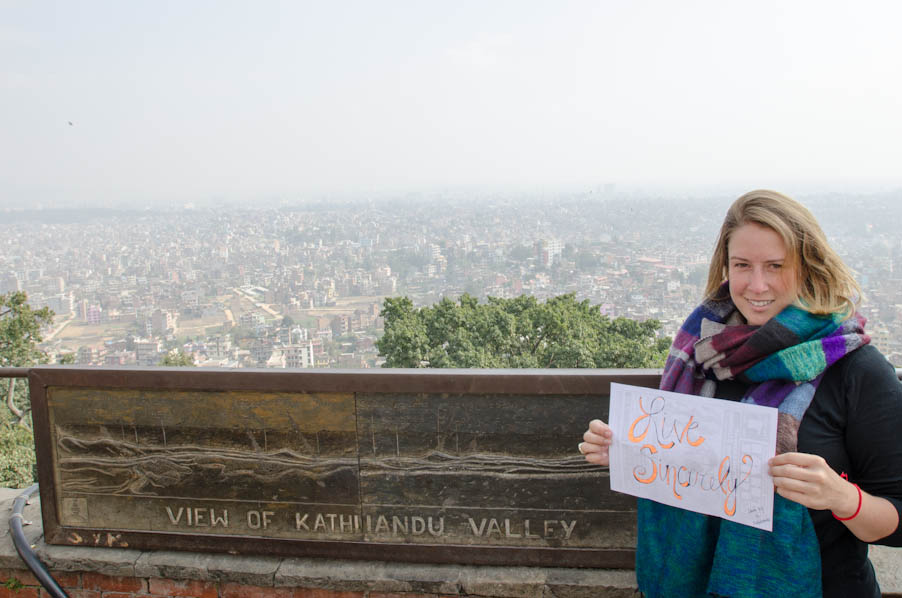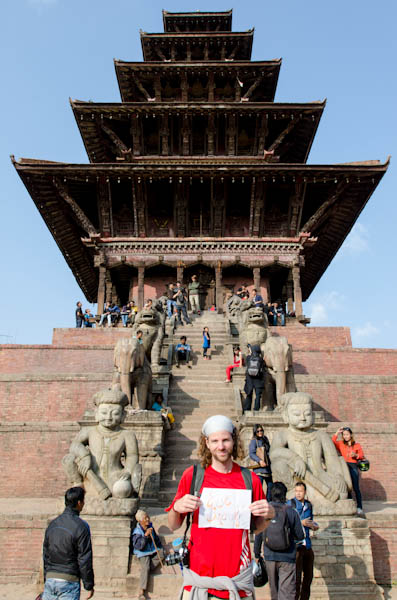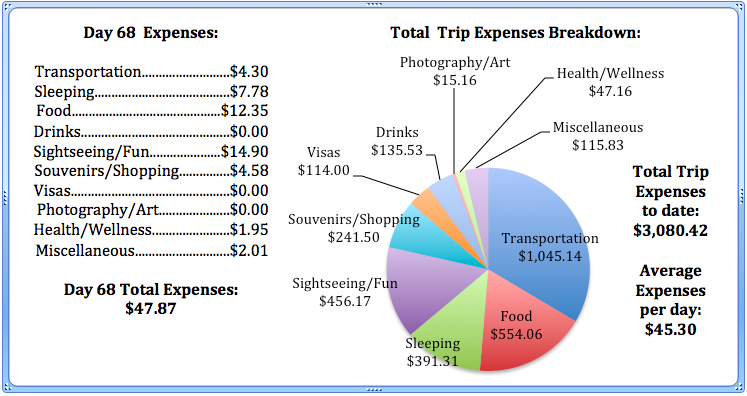We started our day off with a walk from Thamel to Swayambhunath, also known as The Monkey Temple. At first, I thought the nickname 'Monkey Temple' existed simply because monkeys happened to inhabit the hill. According to legend, the monkeys are holy. An enlightened being, Manjusri (who is associated with trascendent wisdom) was raising the hill that Swayambhunath sits on. For some reason (I don't quite get why) Manjusri was supposed to leave his hair short, but he let it grow. Lice grew and transformed into the monkeys that now roam the hill and steal offerings left at the stupa.

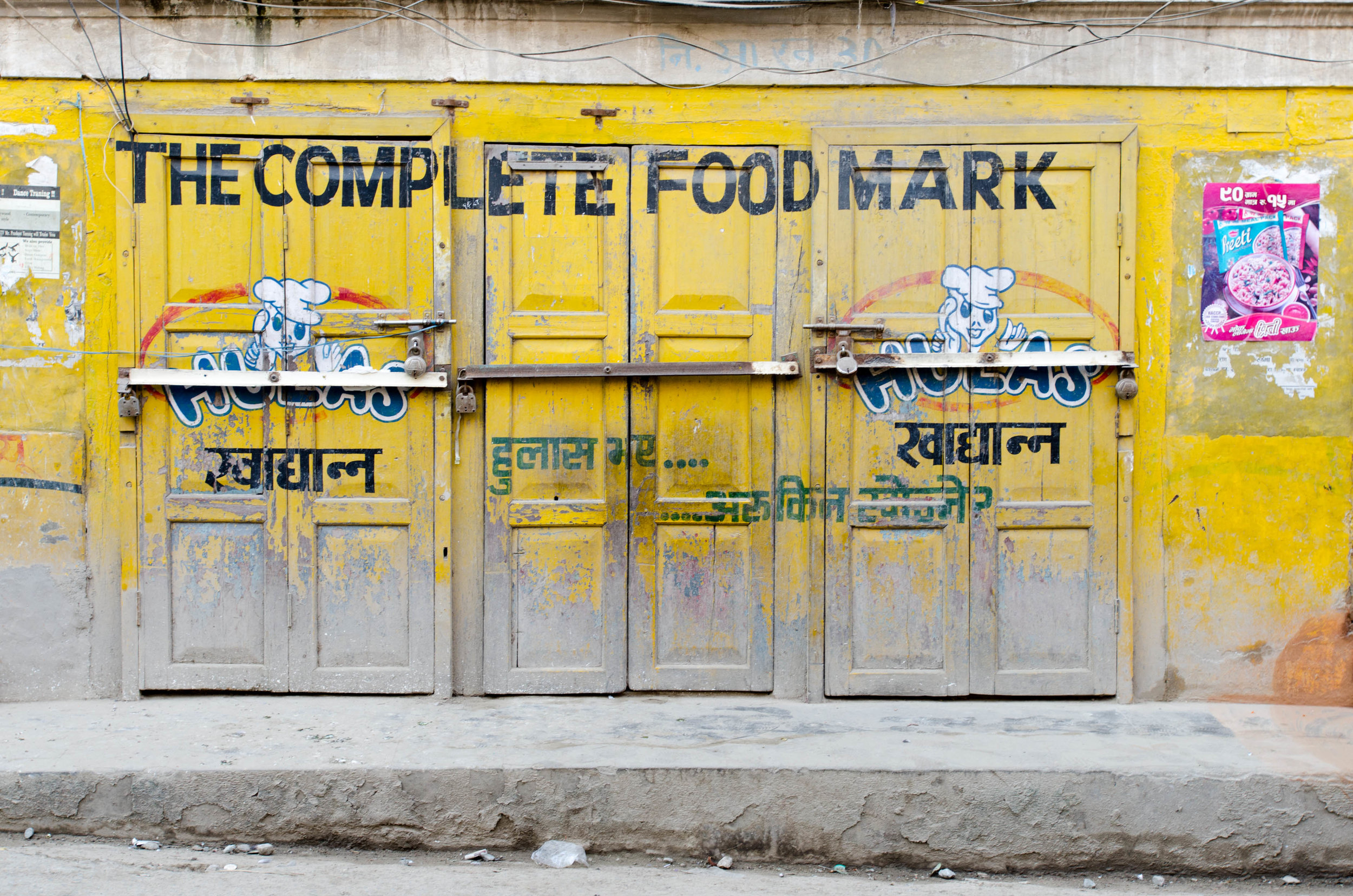
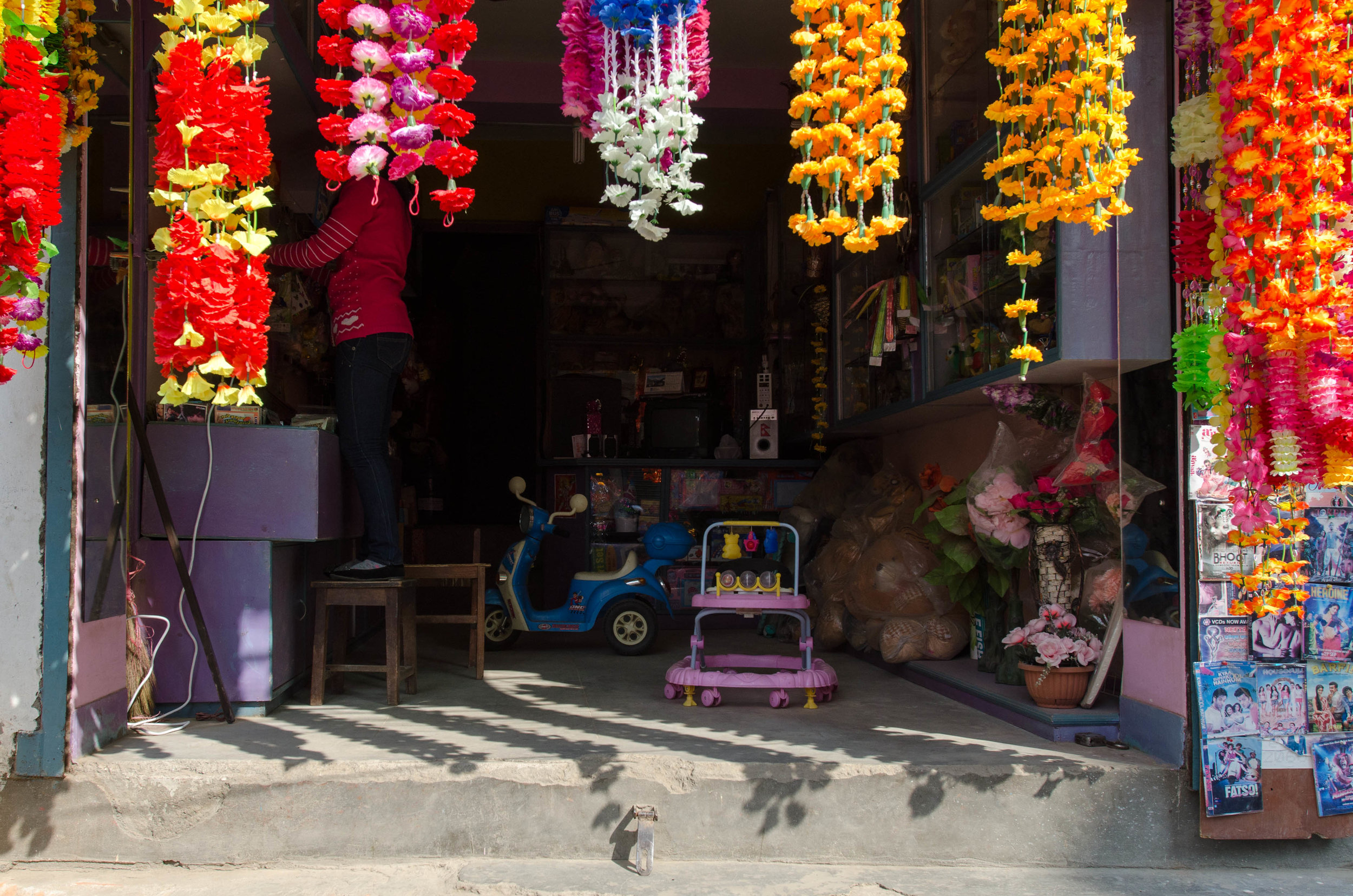
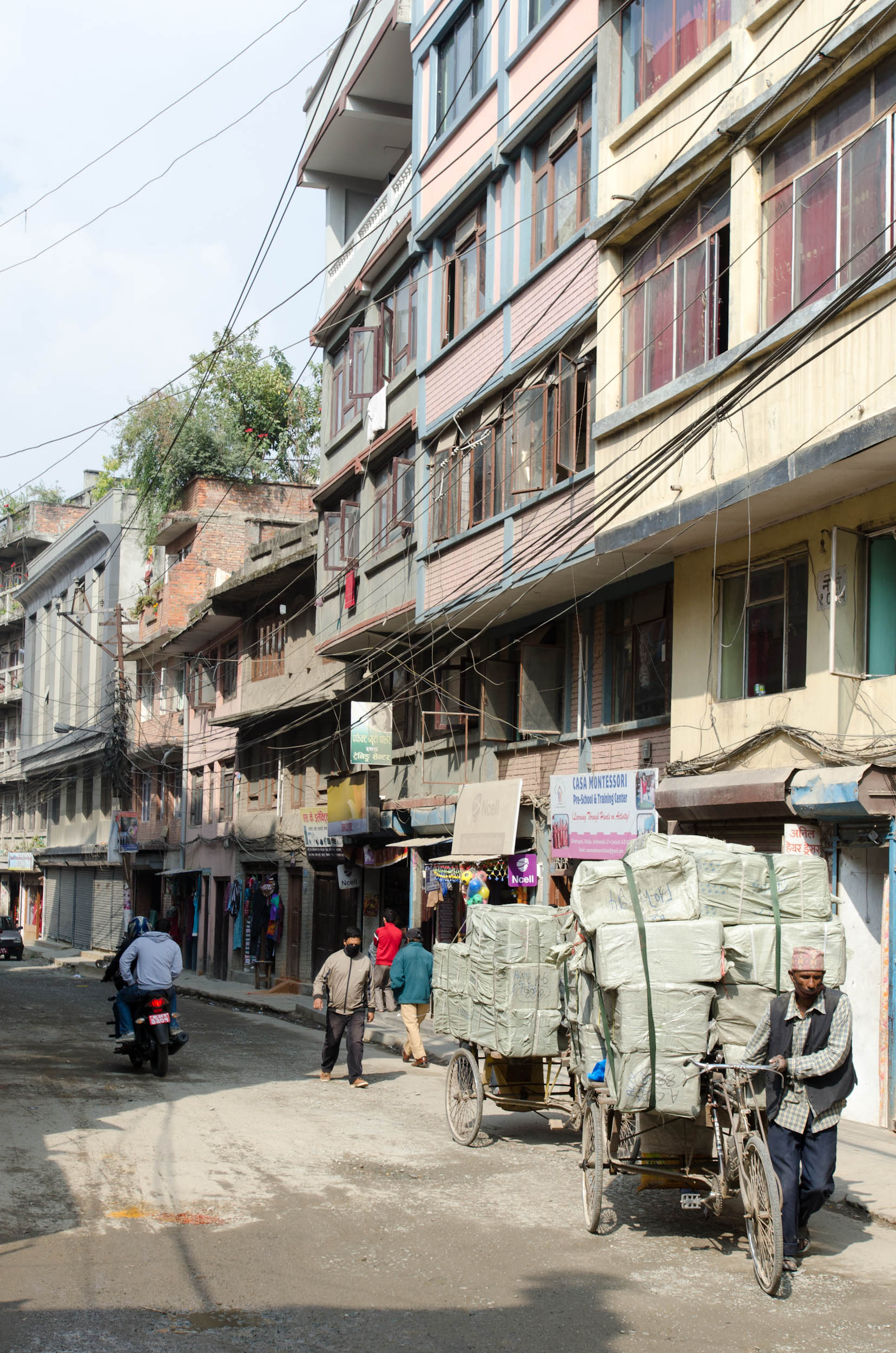
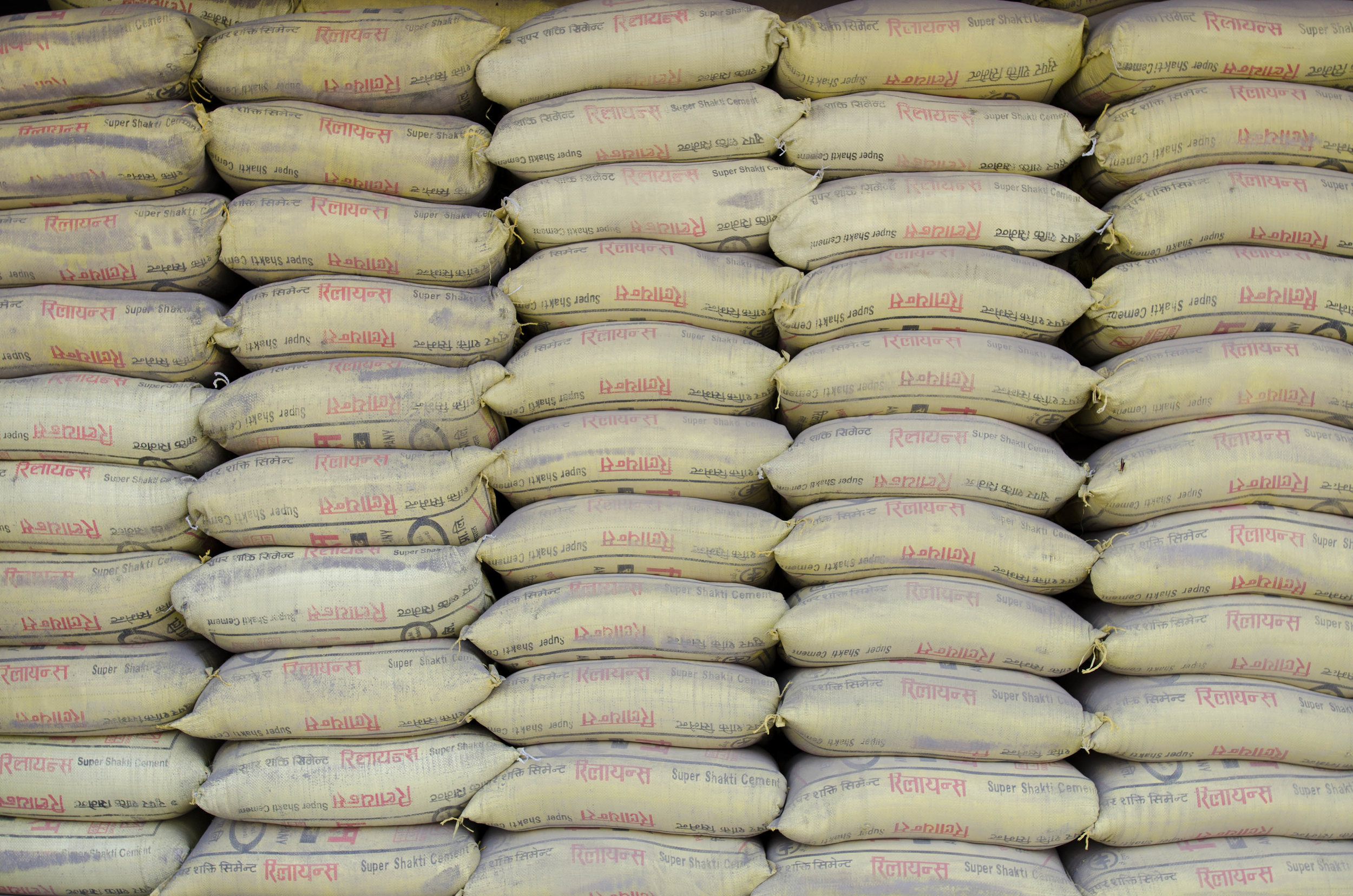
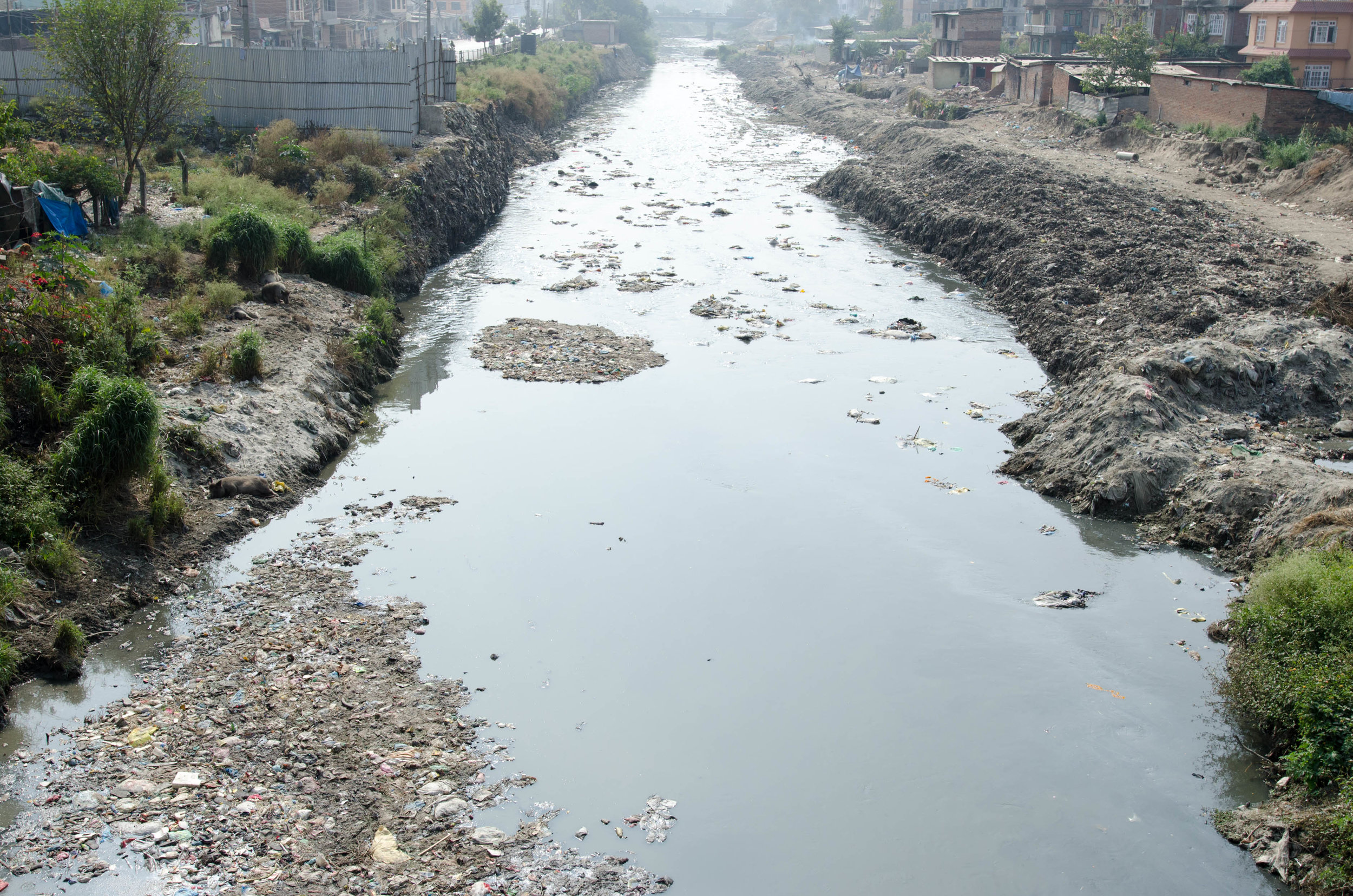
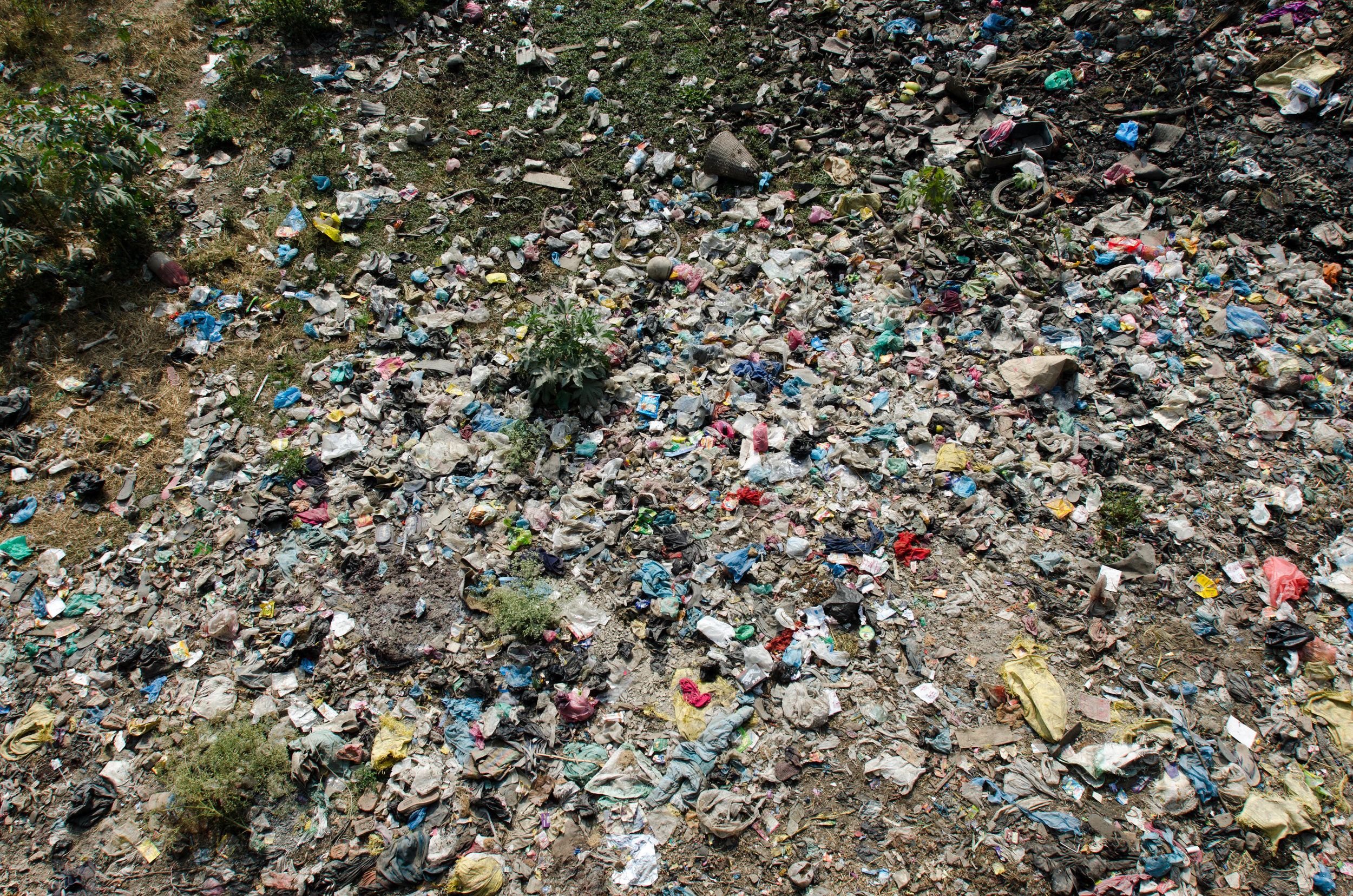
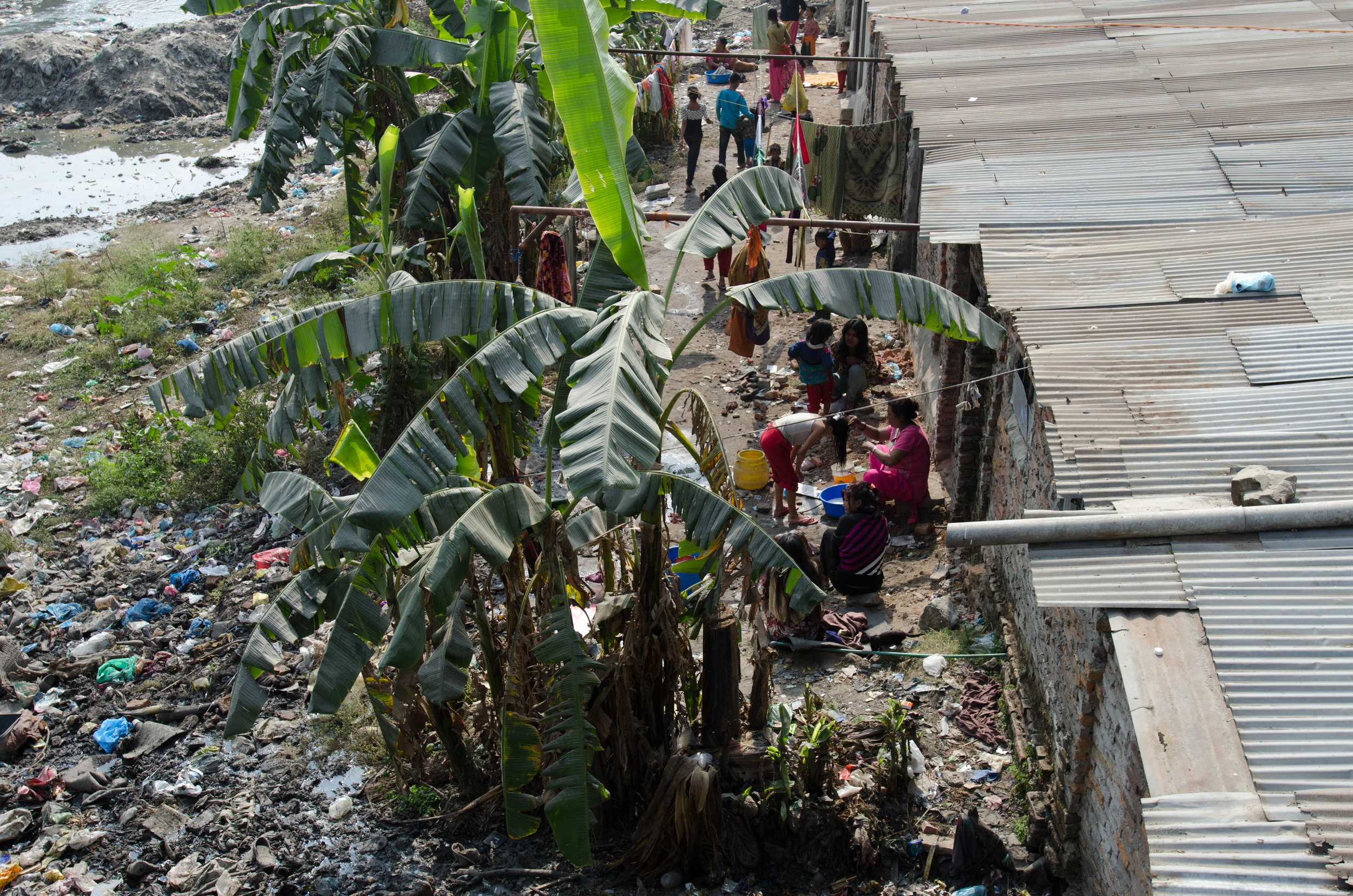

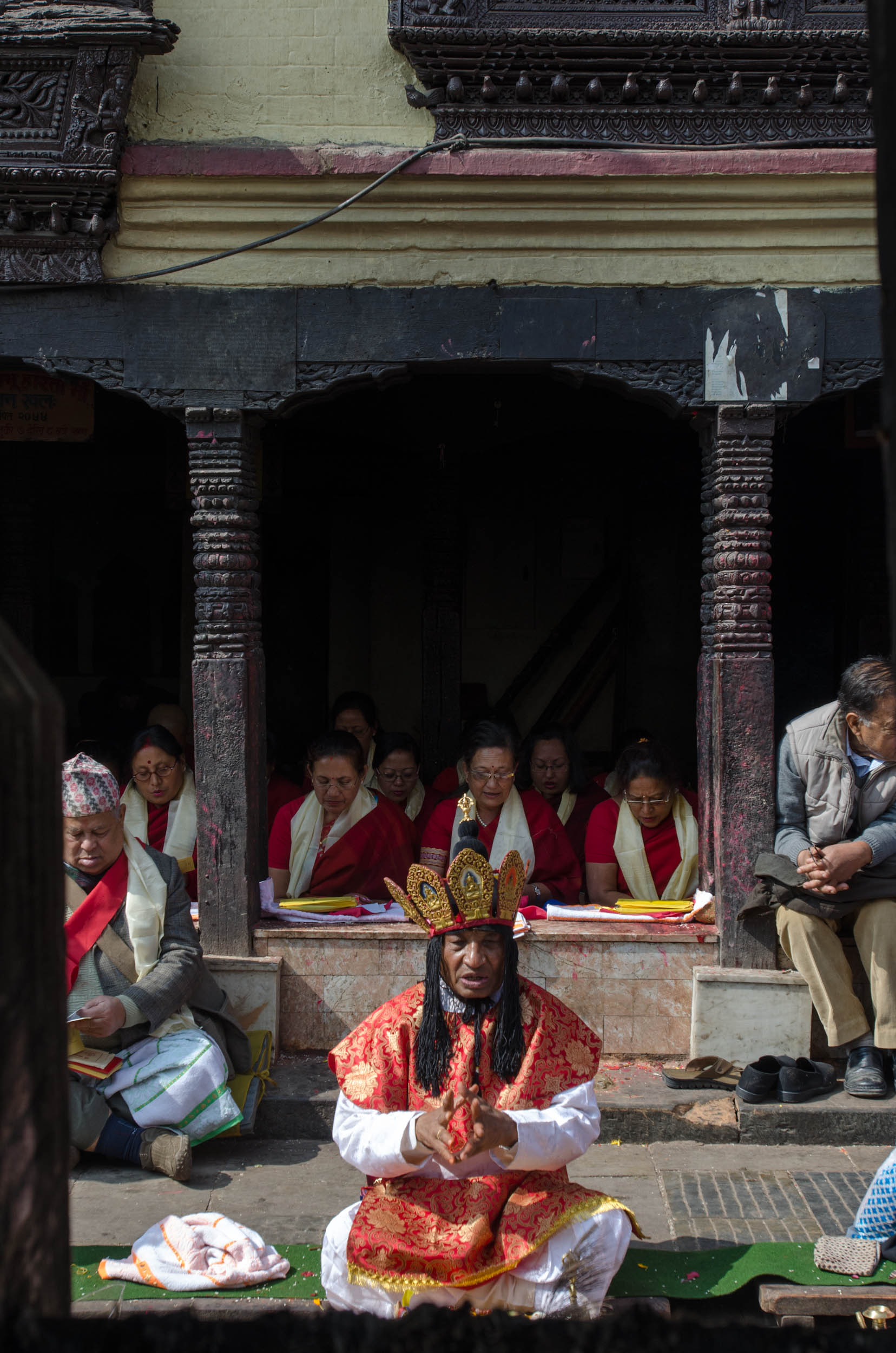
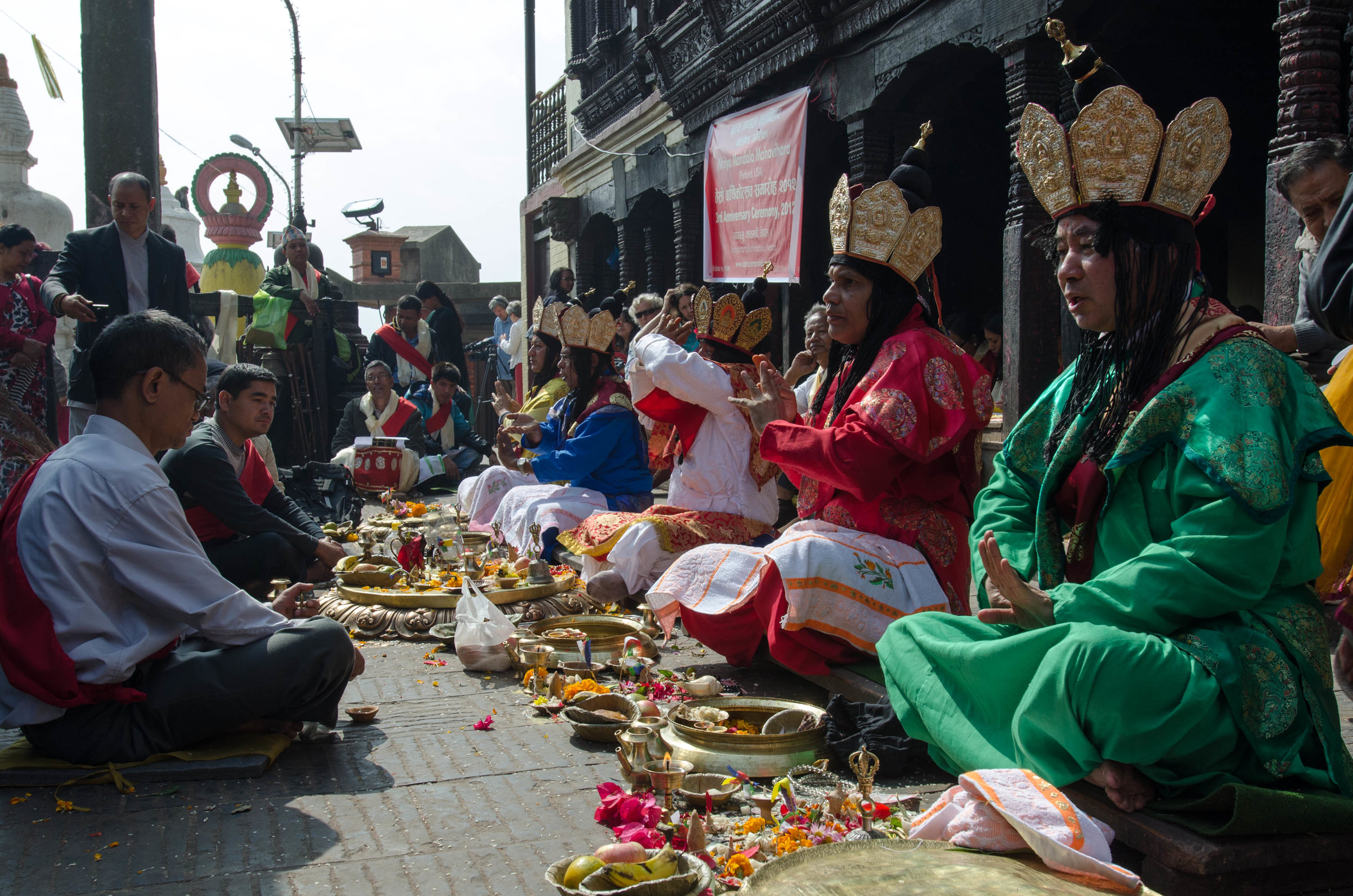
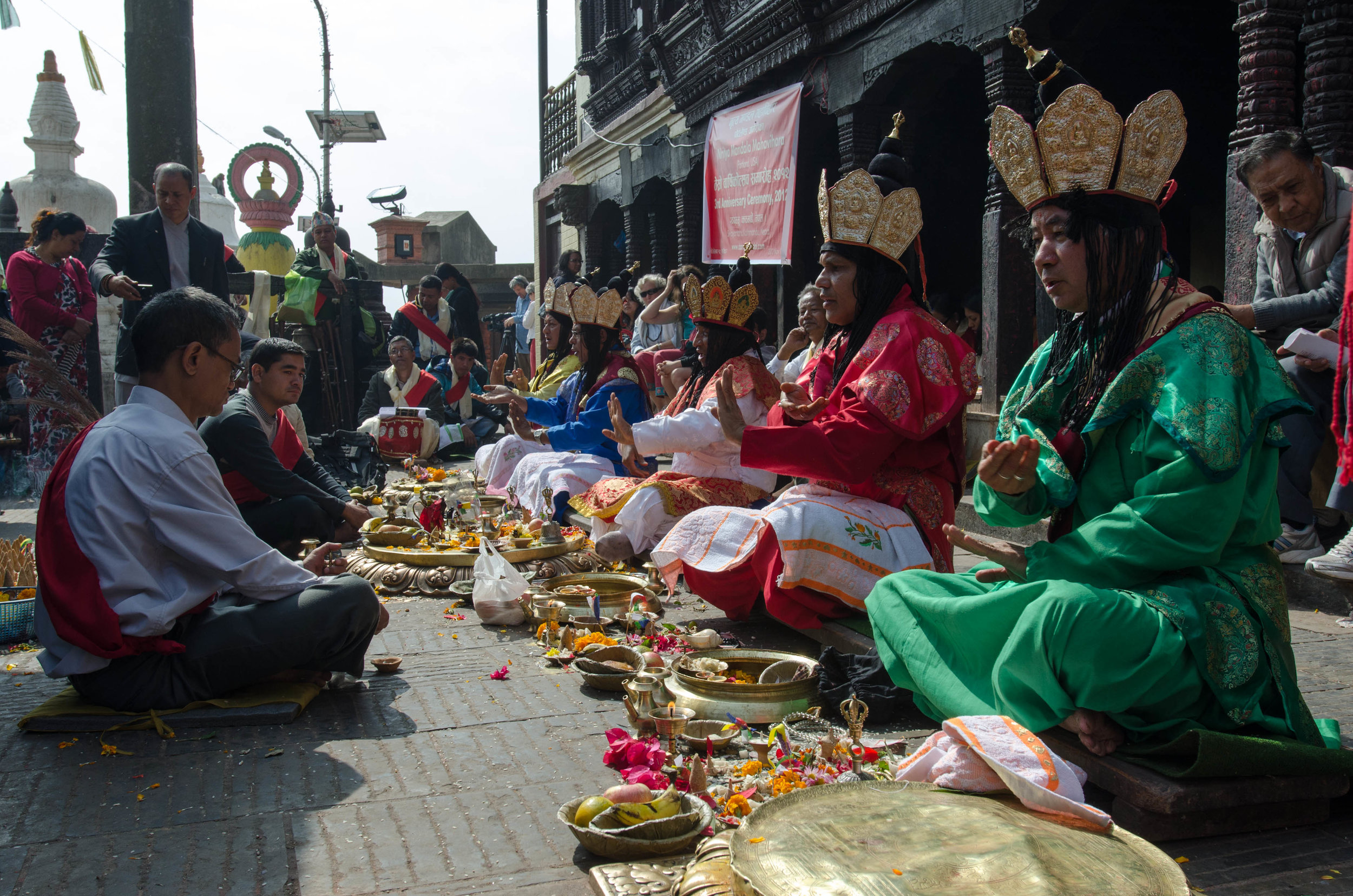

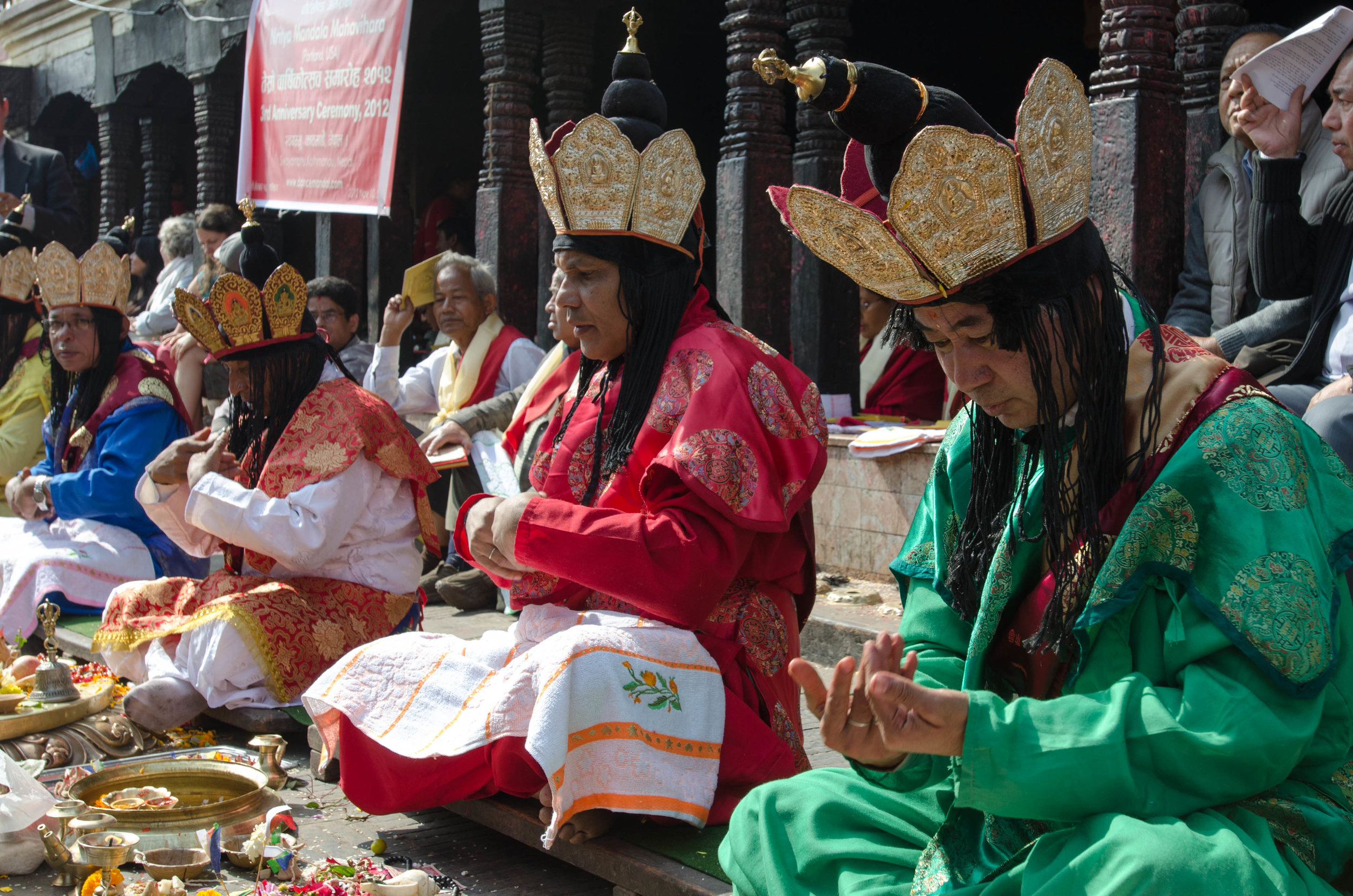
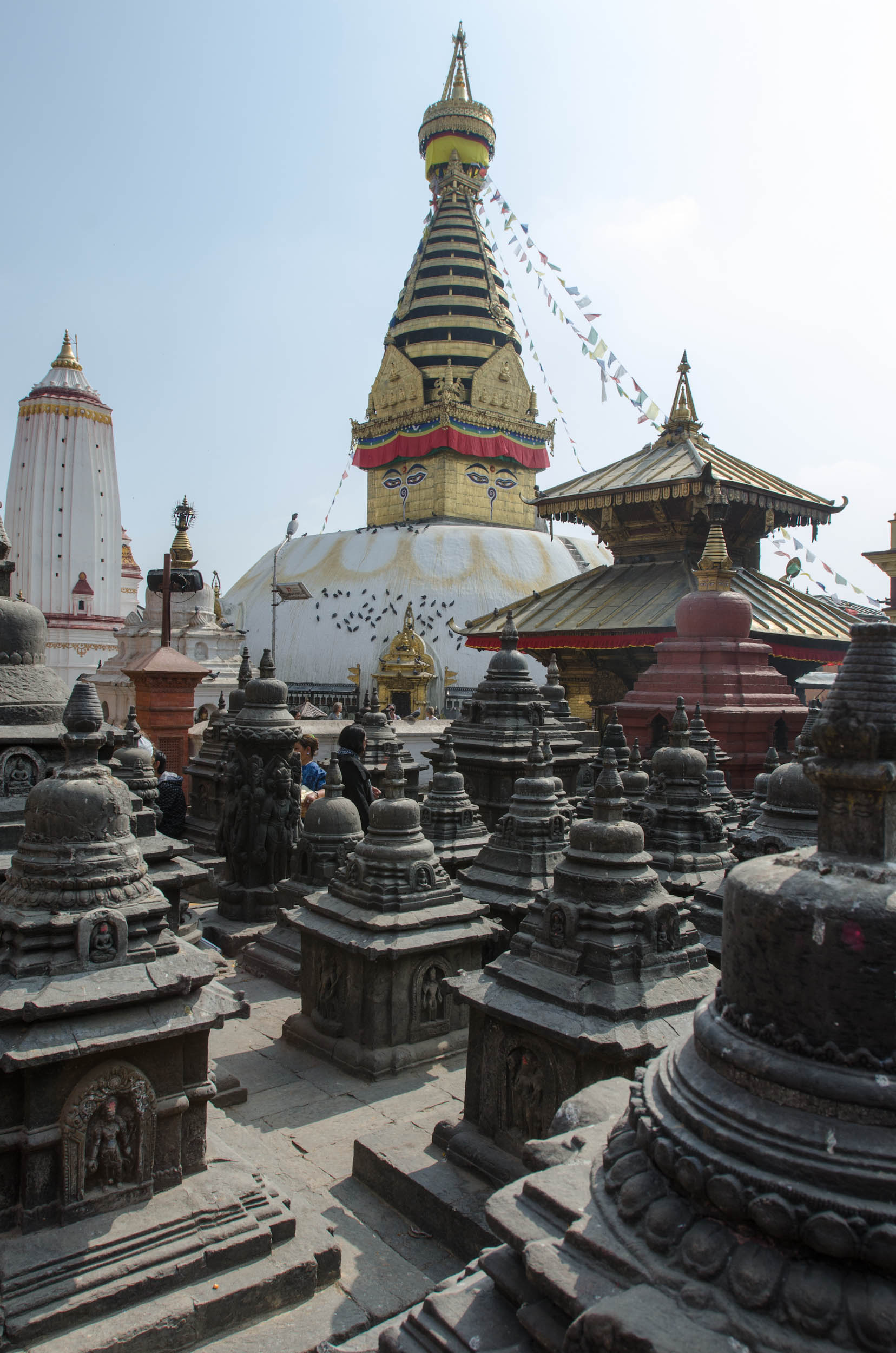
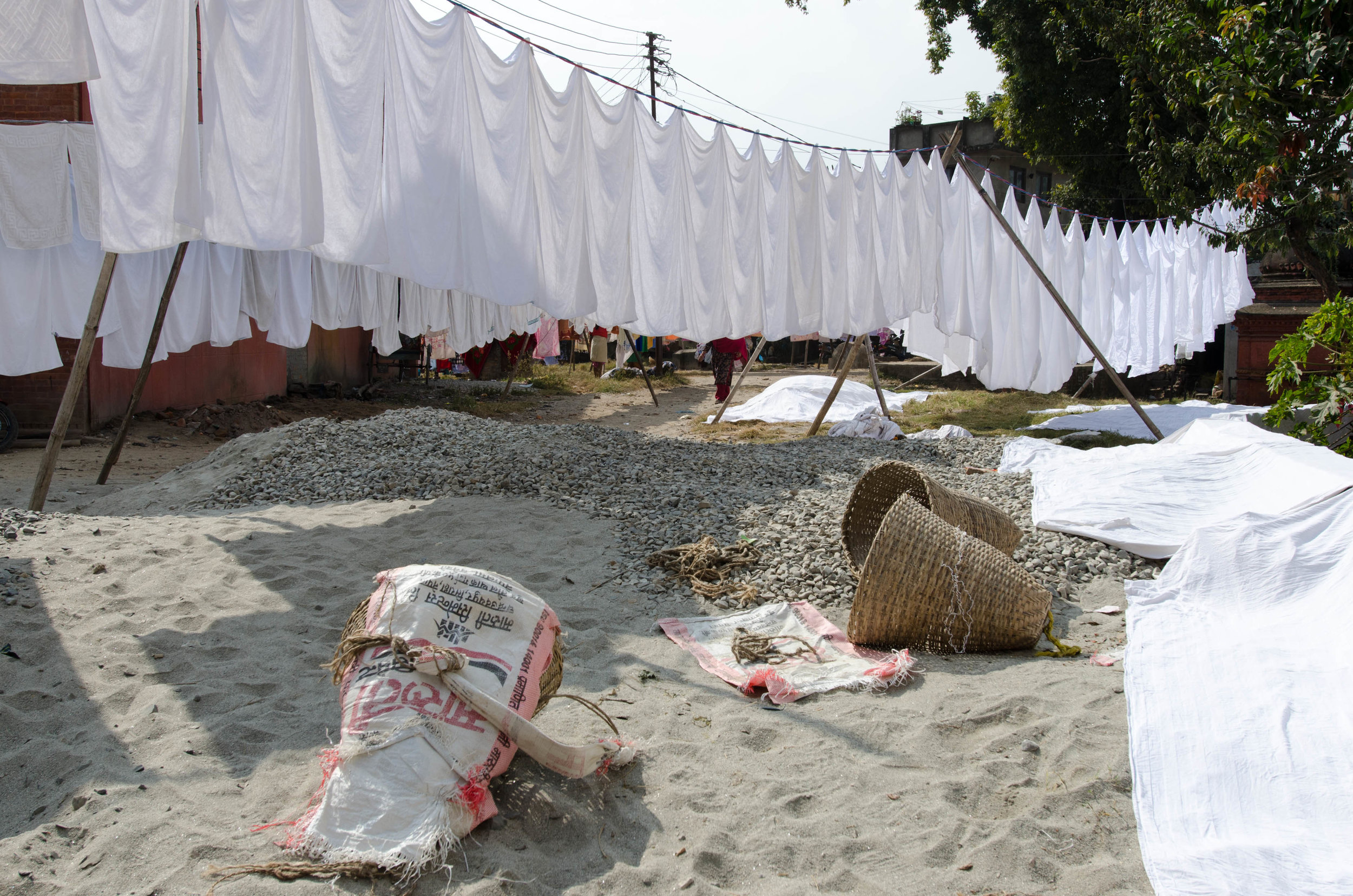
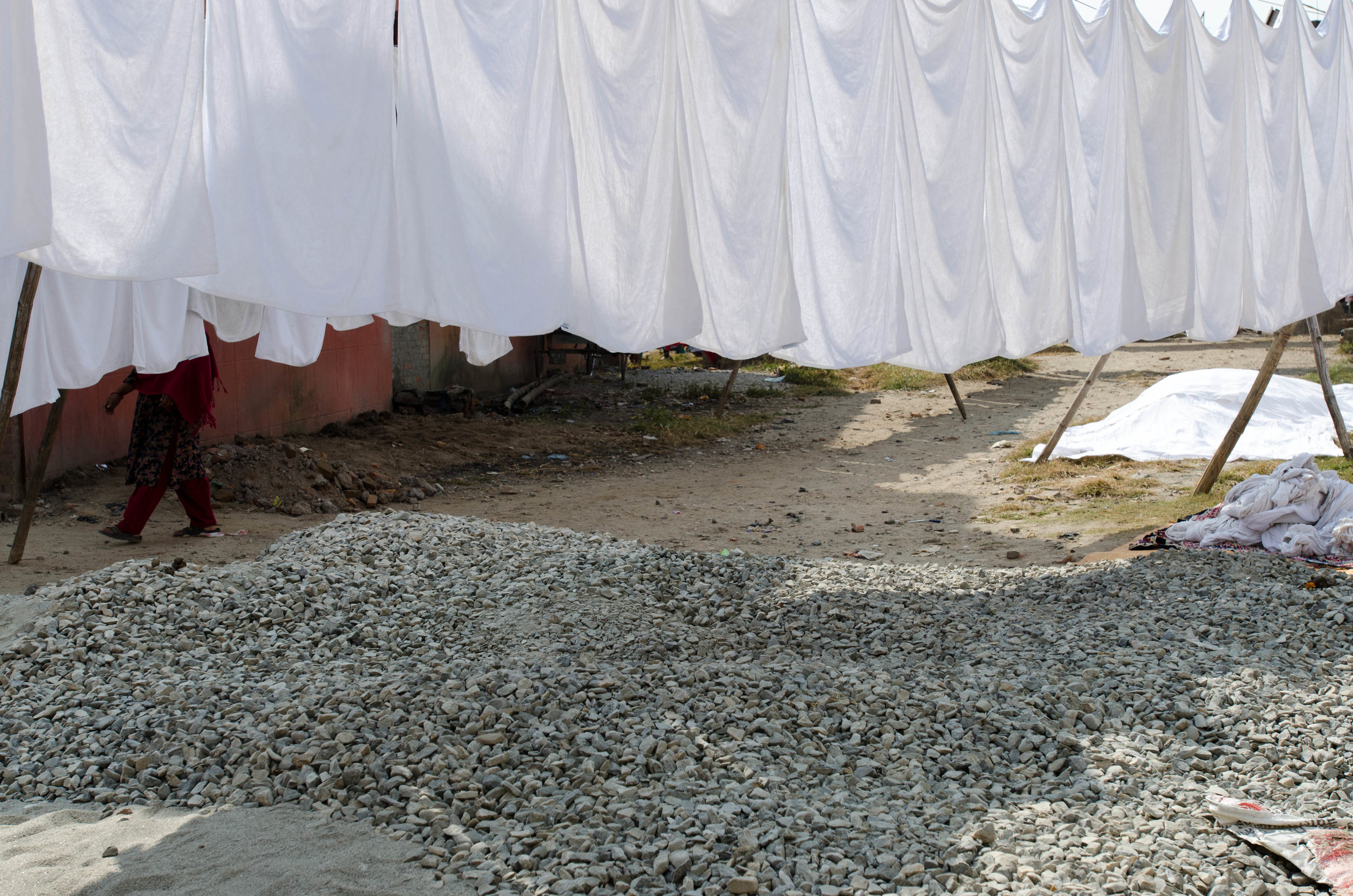
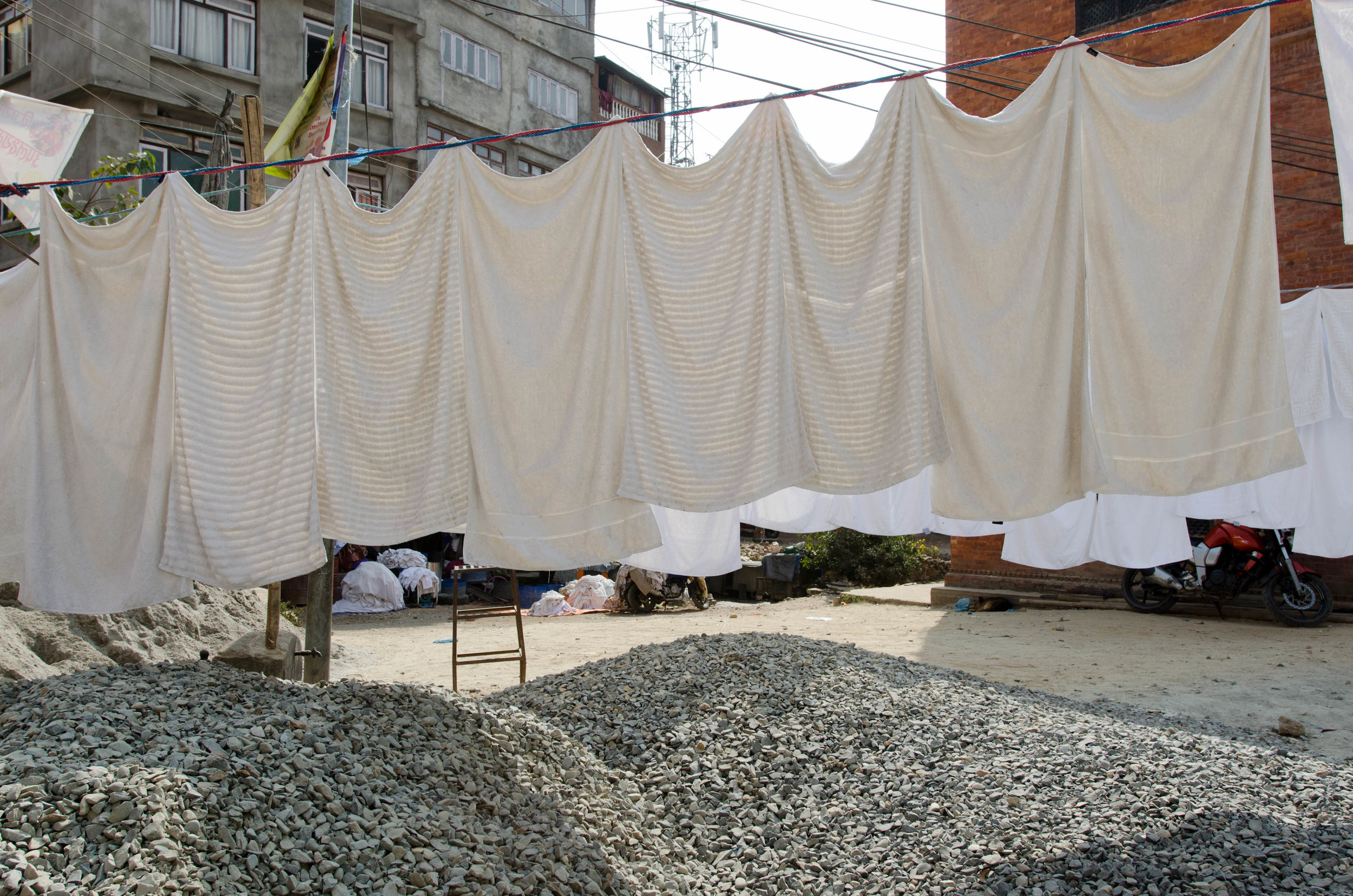
After 'Monkey Temple,' we traveled around Kathmandu Valley to the ancient Newar town, Bhaktapur. Another UNESCO World Heritage site, Bhaktapur held a (surprise!) Durbar Square and lots of temples. It's the third largest town in the Kathmandu valley, and famous for its wood, metal, and stonework. The most obvious was the wood work, and the pottery that seemed to be made and sold everywhere in the town.
Our walk to the temple felt very much like the walking tour we went on earlier in the week. I was happy to walk along taking pictures when I felt like it, that is, until I was a little bit overwhelmed with all of the garbage thrown into the river and watching people go about their daily routines (washing their hair, bathing, and getting dressed) right next to the waste strewn into and onto the banks of the river.
We are so lucky to have a developed sanitation system. Can you even imagine bathing in this water? This is just one of the many instances that I feel so very fortunate. I cringe when the water is cold, and after today, I feel spoiled for doing so. It's clean, it comes from a faucet in a tiled bathroom, and I'm cringing because it's not the perfect temperature? Obviously I need to re-evaluate a few things…
After climbing up a steep set of stairs, we arrived to the top of Swayambhunath. It was like a smaller – much smaller – version of Boudhanath – with holy monkeys. The stupa was the center of colorful waving prayer flags. Different groups were in prayer behind the side we climbed up to the top. Dogs and monkeys stole and ate the rice and fruit offerings around the stupa.
On our way back to collect our bags and a taxi to Bhaktapur, we took a bit of a detour and ended up walking with some cows who were not pleased to be sharing the road. Not only did it turn on Andrew at one point, but it started picking up speed at another, and I walked quickly to stand behind a bike with a Nepalese man keeping a safe distance. There are a lot of animals roaming the streets here, and most seem to be regarded with the same indifference we regard birds at home. They have all seemed pretty tame, that is until this one reared back on passersby with Andrew and I nearly in too close of range.
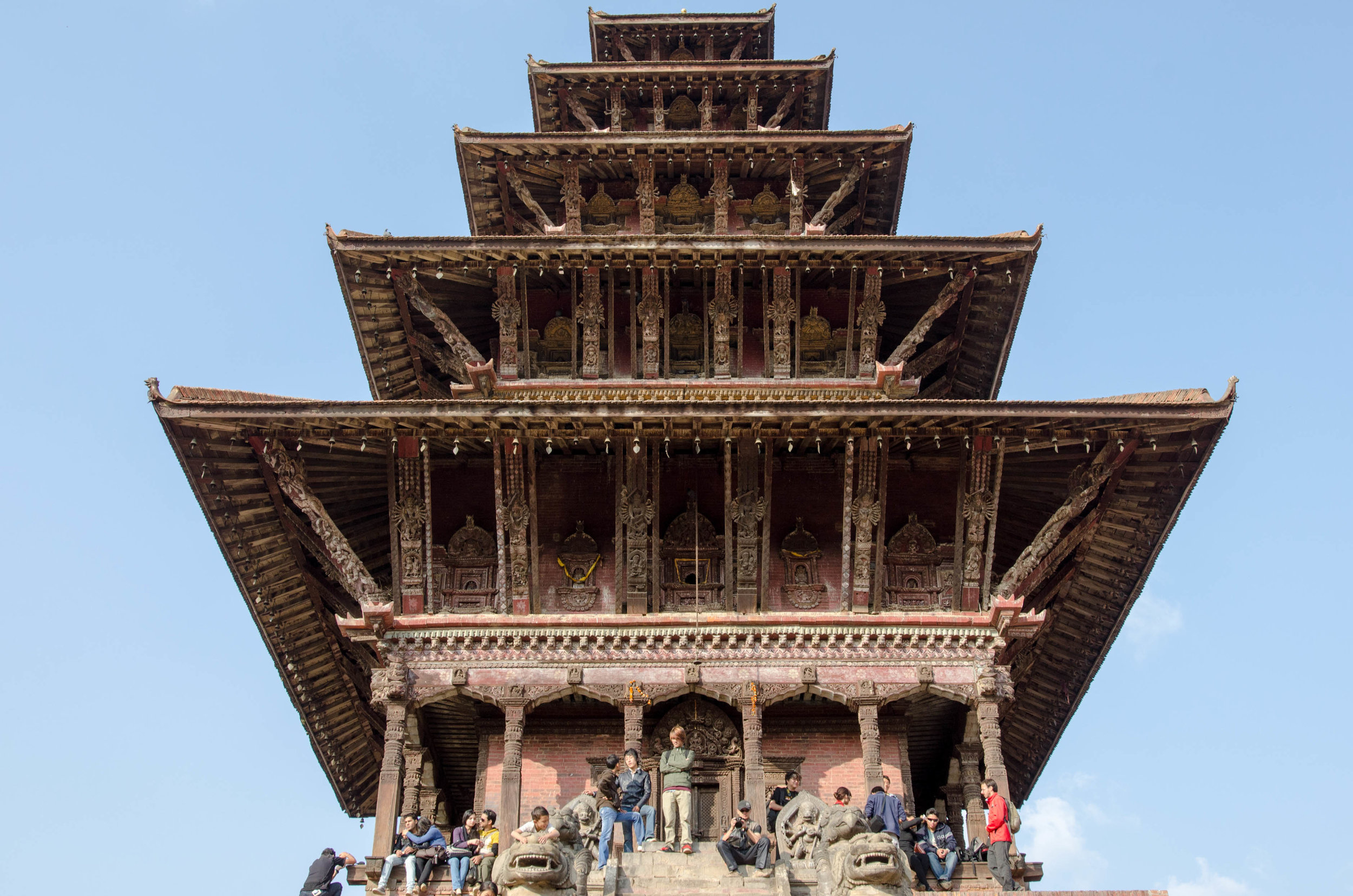




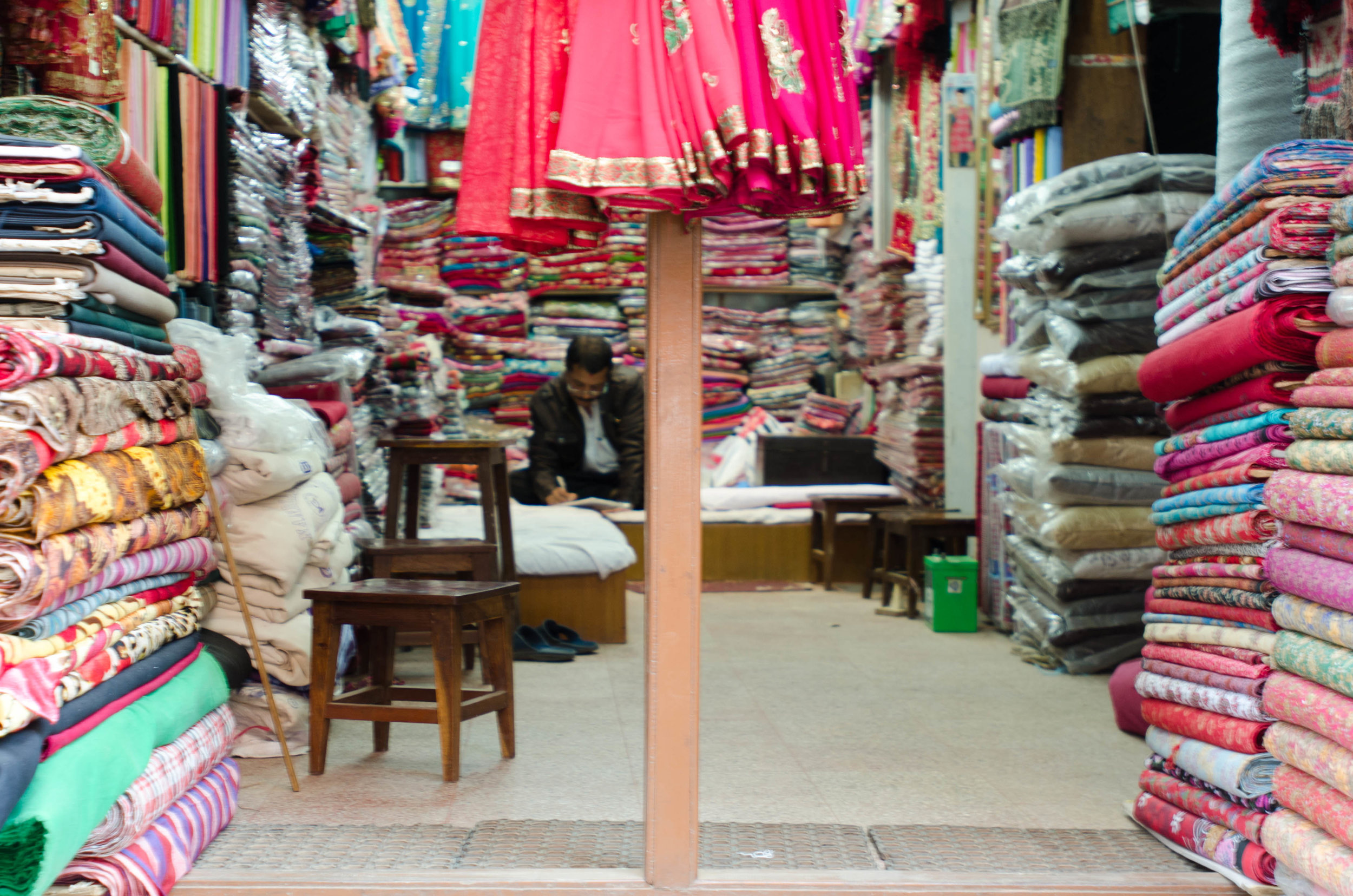
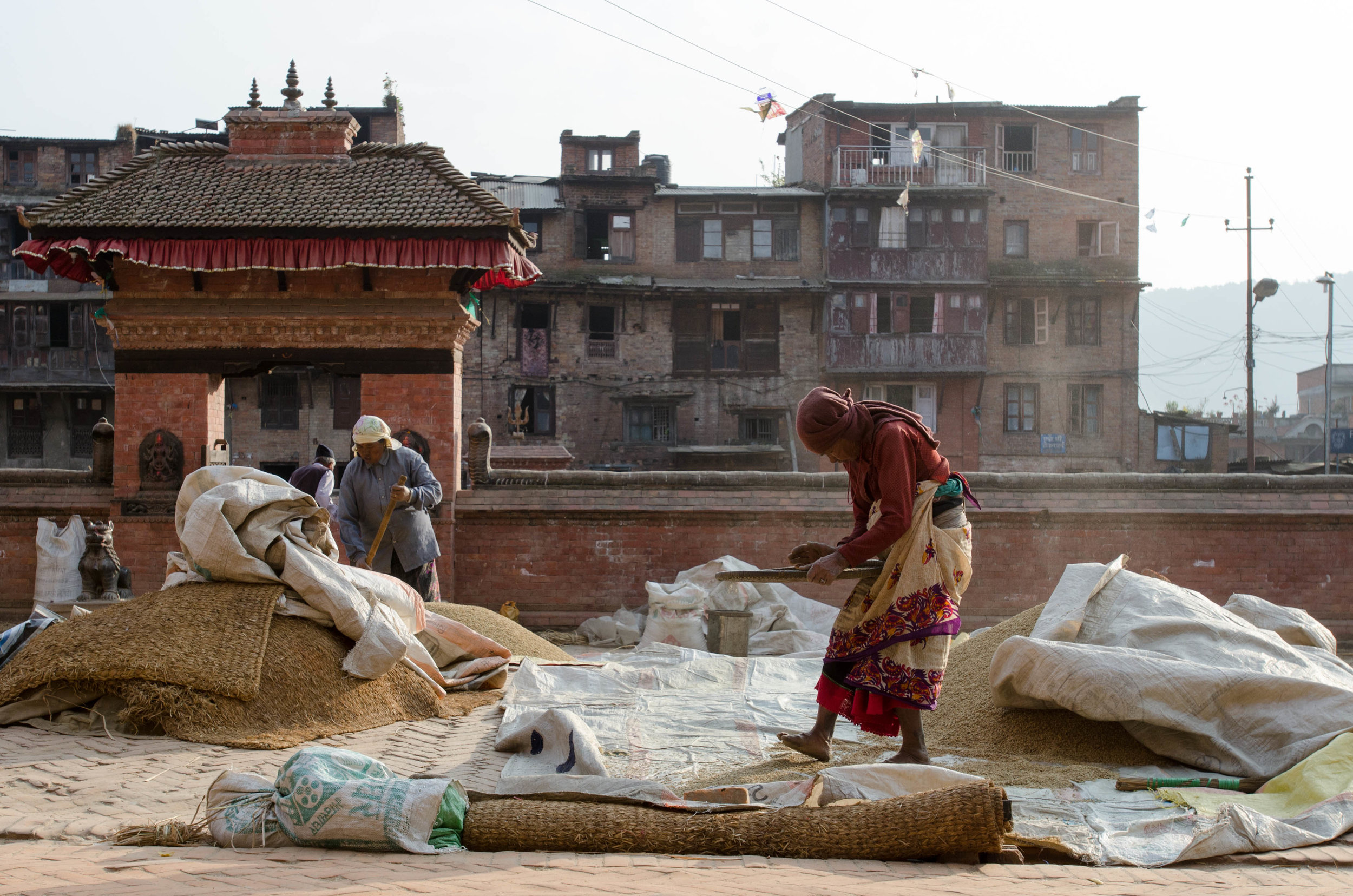
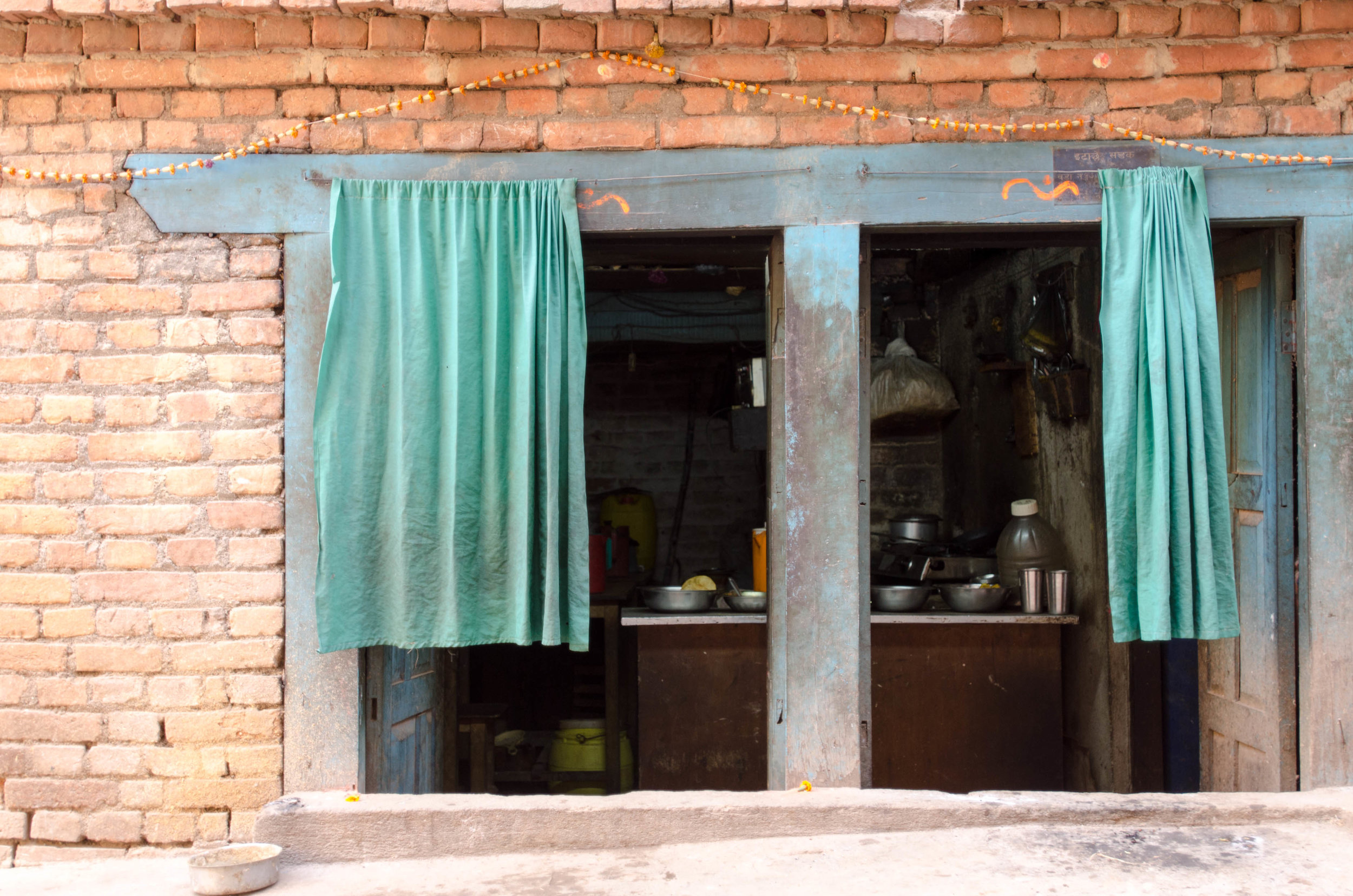
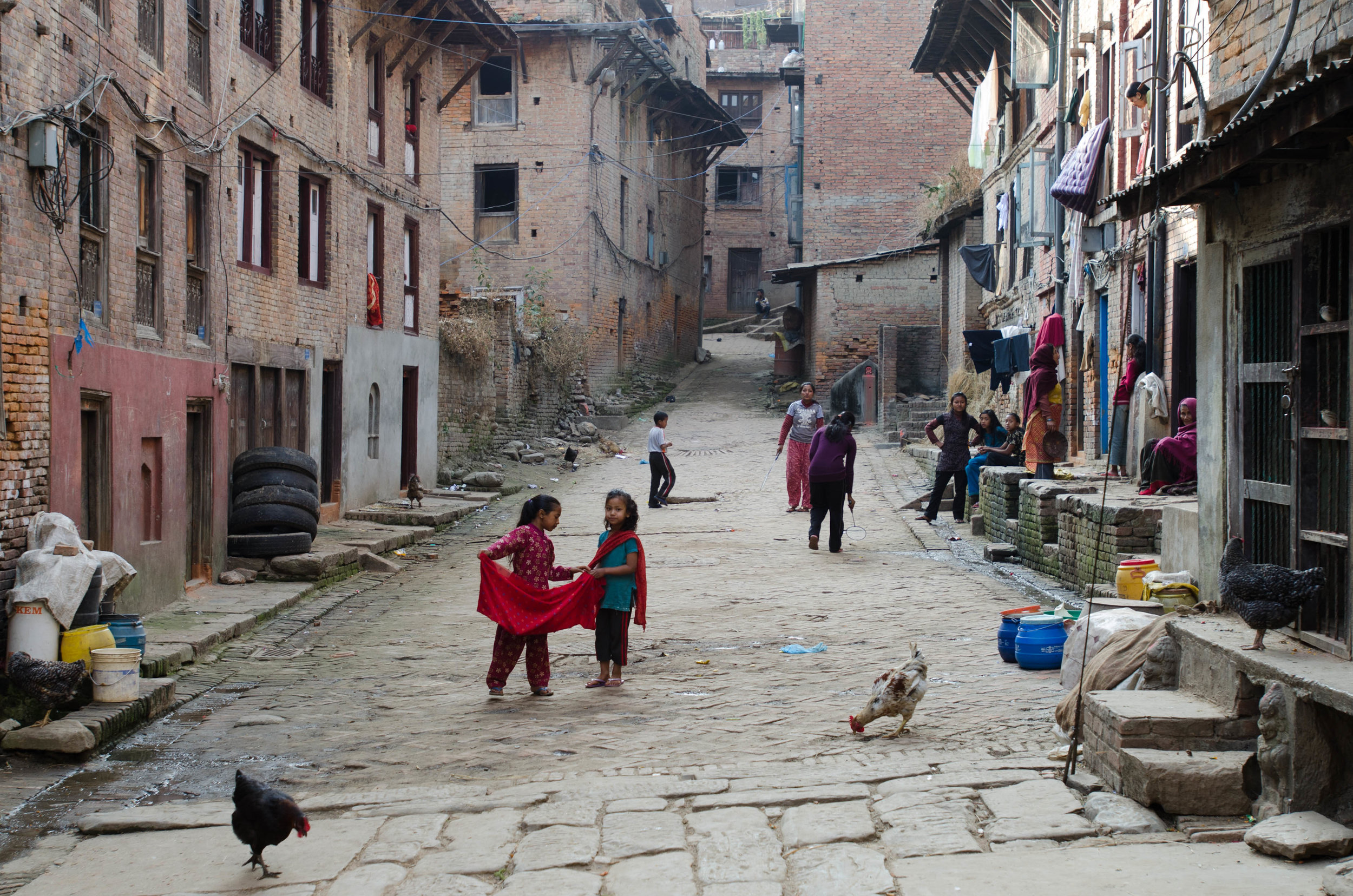
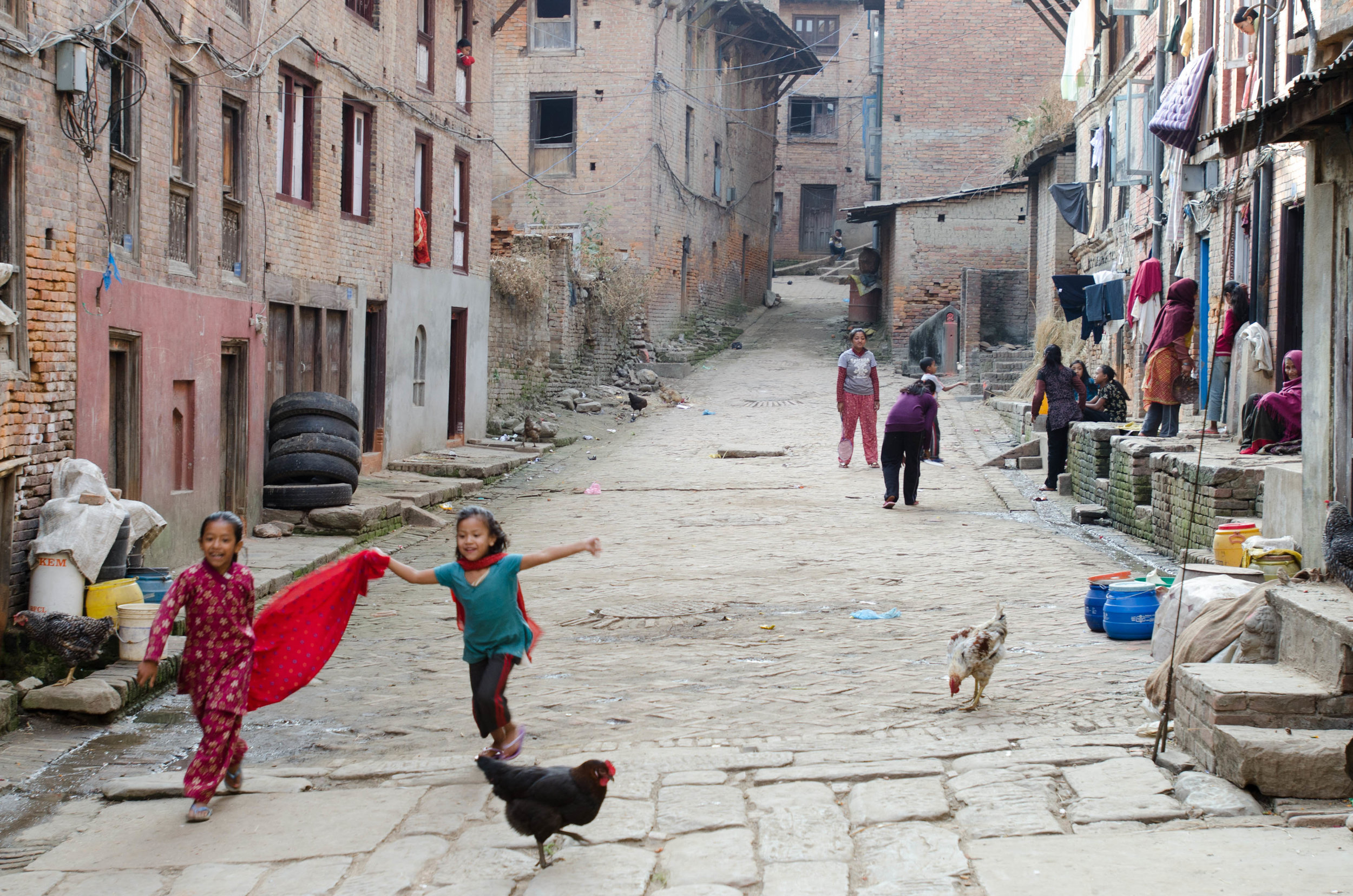
Thankfully, Bhaktapur's animals (chickens mostly) were on the tamer side.
Bhaktapur offered more to do than we were told by our Kathmandu guest-house owner. It had a small town vibe to it, with lots of tourists milling around, or leaning up against pagodas in the Durbar Square reading or people watching. We wandered outside of the tourist areas, tried the custard that the town is known for, and hunted down more momos (think mandu in Korea or dumplings in China) to snack on while we sat above the town on a restaurant rooftop.
We were intrigued when the town literally shut down between 8:00 and 9:00 pm. Because of our late afternoon snack, we didn't go out for dinner until it was too late to eat at any of the recommended restaurants. They were all closed, or in the process of closing their shutters and pulling chairs in. We barely made it to a corner shop to get a snack before it, too shut down for the night. Our room was so cold, I crawled directly into bed, still zipped up in my fleece just to keep warm… Needless to say, I did not get back out to take a picture of the room, which was so tiny, you're really not missing anything – except for the fake flower displays.
